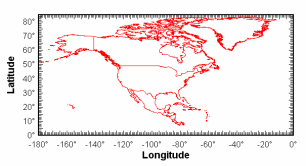

This material updated from The Universal Transverse Mercator Grid, Department of Energy, Mines and Resources Canada, Surveys and Mapping Branch, Ottawa, © 1969, The Queen‘s Printer.
#Utm projection how to#
To help you understand what topographic maps are and how to use them, see National Topographic System (NTS) and The basics. You can check the projection of an image by calling projection () on it: Code. The important feature of the Universal Transverse Mercator Projection is that the zones are standard and readily identifiable, so that an area may easily be designated as lying within a specific zone. In Earth Engine, projections are specified by a Coordinate Reference System (CRS or the crs parameter of many methods). In the far north, where zones are narrow, medium- and small-scale maps may show parts of more than one zone. By convention, the edges of most maps fall along parallels and meridians. In Canada this is done to produce the 1:250 000 and 1:50 000 scale maps, which are the two scales of the National Topographic System.

These basic sheets are divided further into sections and each section is published as a map of a larger scale. Each zone is 8-by-6 degrees in extent and uses a transverse Mercator projection that is designed to limit distortion. No negative numbers or East-West designators Grid values increase from left to right and bottom to top This is just like the X Y Cartesian coordinate system you learned high school math class. The Universal Transverse Mercator (UTM) system divides the world into a regular, nonoverlapping grid of quadrangles called zones. You can find the codes for most commonly used projections from. A CRS tells Python how those coordinates relate to places on the Earth. The Universal Transverse Mercator ( UTM ) conformal projection uses a 2-dimensional Cartesian coordinate system to give locations on the surface of the Earth. Army in 1947 for designating rectangular coordinates on large scale. The UTM system allows the coordinate numbering system to be tied directly to a distance measuring system. The Coordinate Reference System (CRS) is important because the geometric shapes in a GeoSeries or GeoDataFrame object are simply a collection of coordinates in an arbitrary space. And Drtbyk is correct, the plugin doesnt know which format was selected in the settings, thats why it always exports in one format. We switched the export mechanism to use above mentioned Plugins themselves. Once the zone has been flattened onto a level surface it can be divided into a basic set of map sheets of a convenient size. The Universal Transverse Mercator projection and grid system was adopted by the U.S. If someone comes up with a UTM plugin, it could easily be shared amongst users wishing to have that output format.


 0 kommentar(er)
0 kommentar(er)
